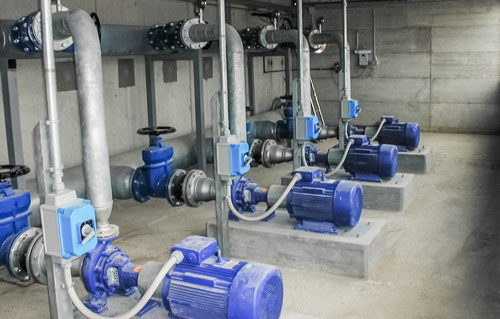Increased Flow Rate
When pumps are operated in parallel, the overall pump curve changes in several ways, impacting both system performance and flow distribution among the pumps.
Operating pumps in parallel leads to a collective increase in the total flow rate delivered by the system. This means that for a given system, the flow rate at any given head (pressure) will be higher when multiple pumps are operating in parallel compared to a single pump.
Shifted System Curve
Each pump has its own pump curve representing the relationship between flow rate and head (pressure) for that pump. When pumps are operated in parallel, the system curve, which represents the hydraulic characteristics of the entire system, shifts to the right. This shift indicates the increased flow rate achievable at a given head due to the additional pumping capacity.
Reduction in Required Head
Operating pumps in parallel can reduce the required head (pressure) for a given flow rate. This is because the combined capacity of multiple pumps can meet the flow requirements of the system more efficiently, leading to a lower pressure requirement.
Increased Efficiency
Operating pumps in parallel can improve the overall efficiency of the system, especially when individual pumps operate near their best efficiency point (BEP). By distributing the load across multiple pumps, each pump can operate closer to its BEP, resulting in less energy wastage and higher overall efficiency.
Equal or Proportional Flow Distribution
Determining the flow distribution among pumps involves understanding the system characteristics, pump curves, and the control strategy implemented. In some systems, pumps are designed to share the flow equally, ensuring that each pump operates at the same operating point on its pump curve. Alternatively, flow distribution may be proportional to pump capacities or dynamically adjusted based on system demands.
Variable Speed Control
Modern systems often employ variable speed drives (VSDs) or variable frequency drives (VFDs) to control pump speeds dynamically. With variable speed control, flow distribution among pumps can be adjusted continuously based on real-time system demands, optimizing energy consumption and system performance.
Control Algorithms and Manual Adjustment
Sophisticated control algorithms or manual adjustments may also be employed to ensure efficient and stable operation of pumps in parallel. These approaches dynamically adjust pump speeds or control valve positions to achieve the desired flow distribution based on system parameters and requirements.
In summary, operating pumps in parallel can increase the overall capacity and efficiency of a pumping system. However, achieving optimal flow distribution among pumps requires careful design, control, and monitoring to ensure performance, energy efficiency, and system stability.
